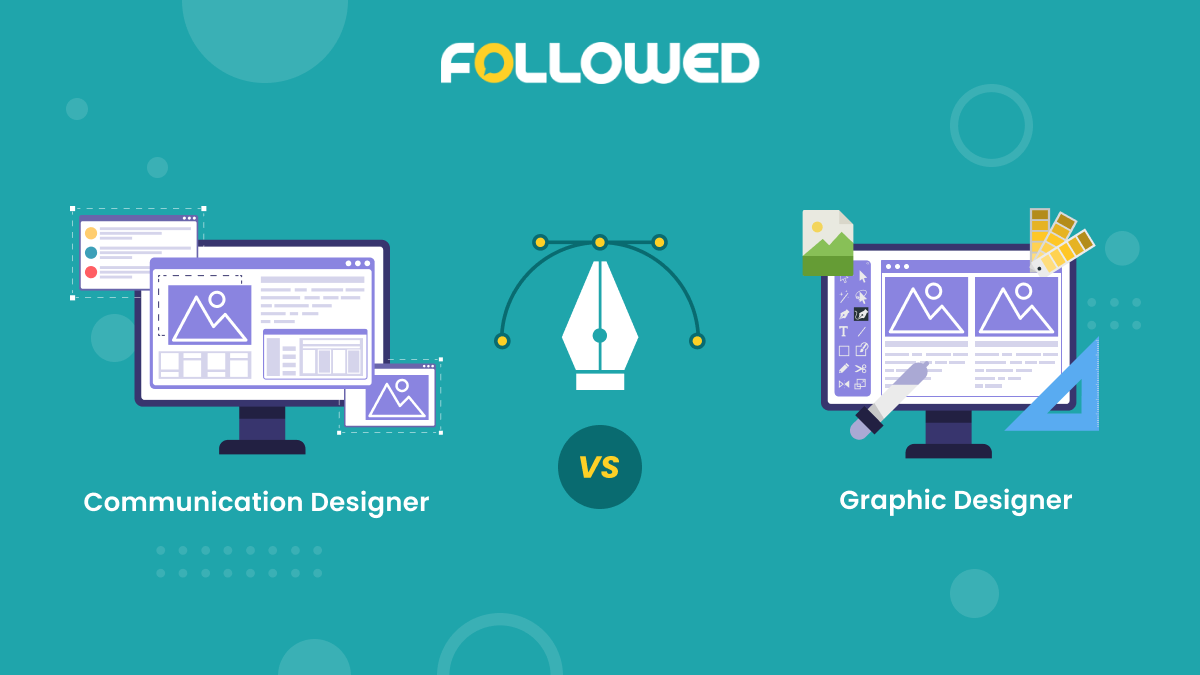Designing is a skill that has been around for centuries, along with designers, whether they are communication designer or graphic designer or web designer. The ability to create a concept and then turn that concept into something tangible is one of the most sought-after skills in today’s workforce.
Most of us know that graphic design is the use of art to communicate visually using a variety of mediums. So it’s relatively easy to confuse it with visual communication or communication designers. However, when you examine carefully, these two have a lot in common but also possess very apparent differences.
In this article, we’ll compare graphic designers and communication designers with the aim of helping you understand the differences between these two professions so that you can make an educated decision about which one will be better suited to your needs. To understand these two better, let’s look at what defines them, their basics, and much more.
Table of Content:
- What are Digital Visual Communication Designers?
- What are Graphic Designers?
- Importance of Communication Designer & Graphic Designer
- What are the Basics of Communication Designer & Graphic Designer?
- Pros and Cons of Becoming a Communication Designer & Graphic Designer
- What are the Roles of Communication Designers & Graphic Designers?
- Reason to Choose Communication Designers or Graphic Designers as a Career
- What are the Different Opportunities for Communication Designers as well as Graphic Designers?
What are Digital Visual Communication Designers?
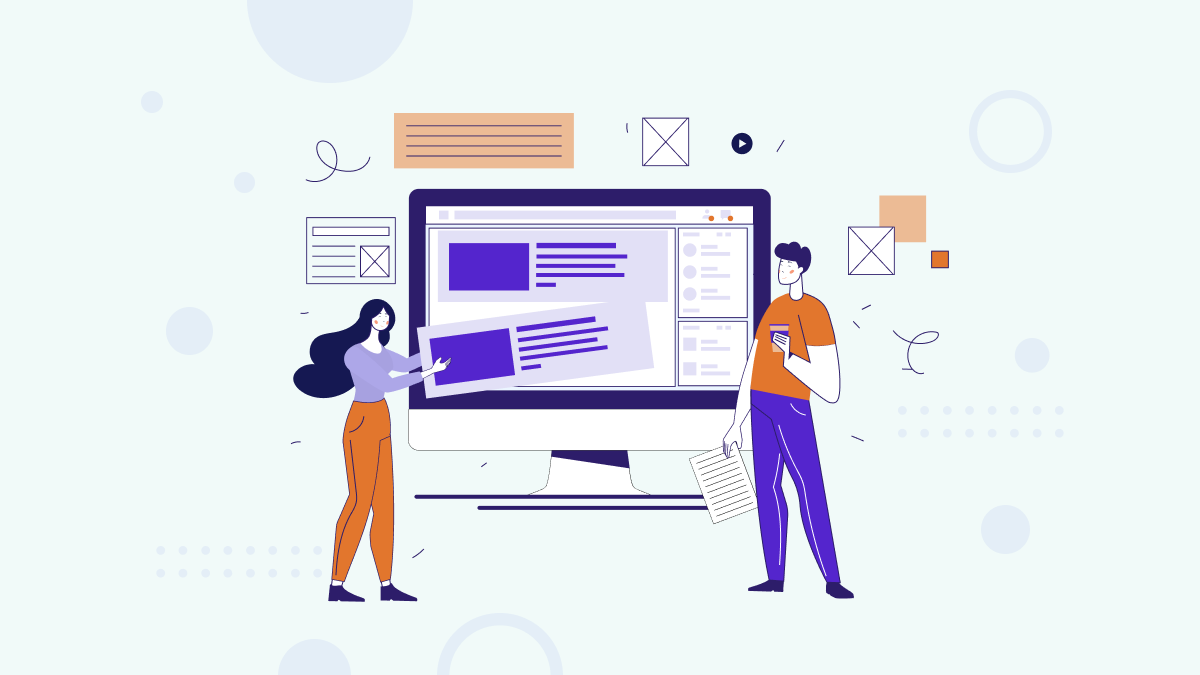

Digital visual communication designers are professionals specialized to use software applications to design visual elements for their customers. They are a big deal for any company as their work represents the company’s marketing concept and goals.
There are ample options to choose from for a digital and communication design graduate. You just have to put your hands on the one, right for you.
What are Graphic Designers?
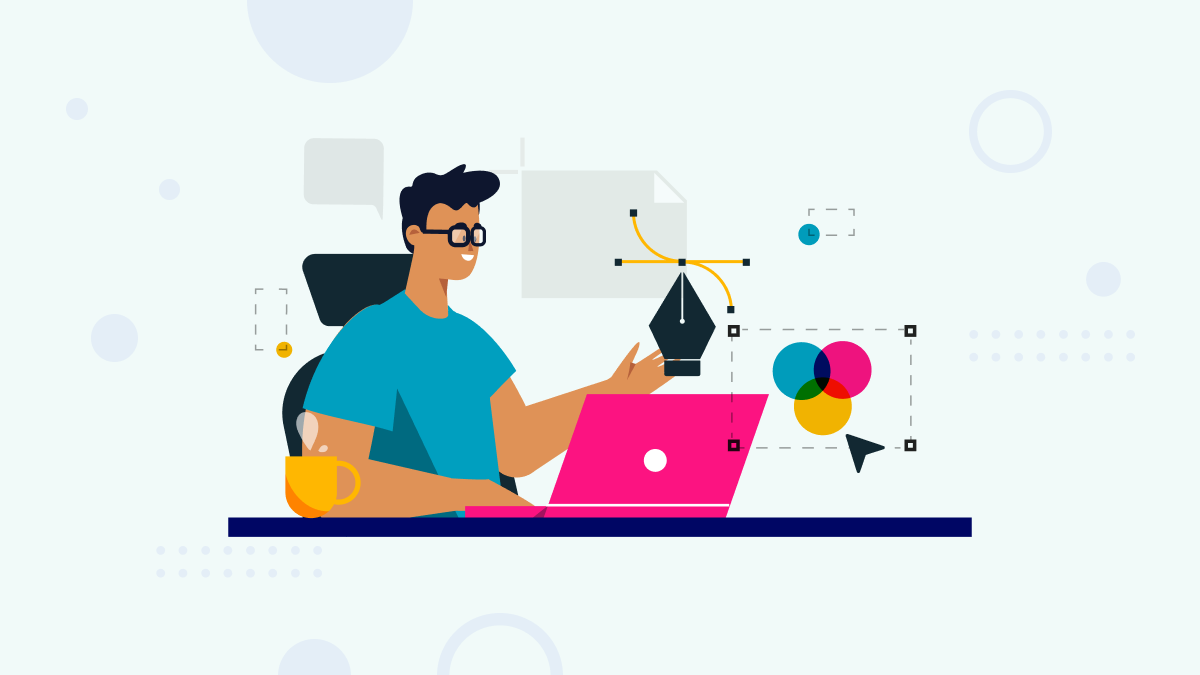

A Graphic Designer communicates ideas and information through visual concepts. Primarily using design software, they create compelling visuals that inspire and captivate audiences. Graphic Designers strategically combine design elements to develop aesthetically appealing layouts, advertisements, reports, logos, packaging, and more.
Importance of Communication Designer & Graphic Designer
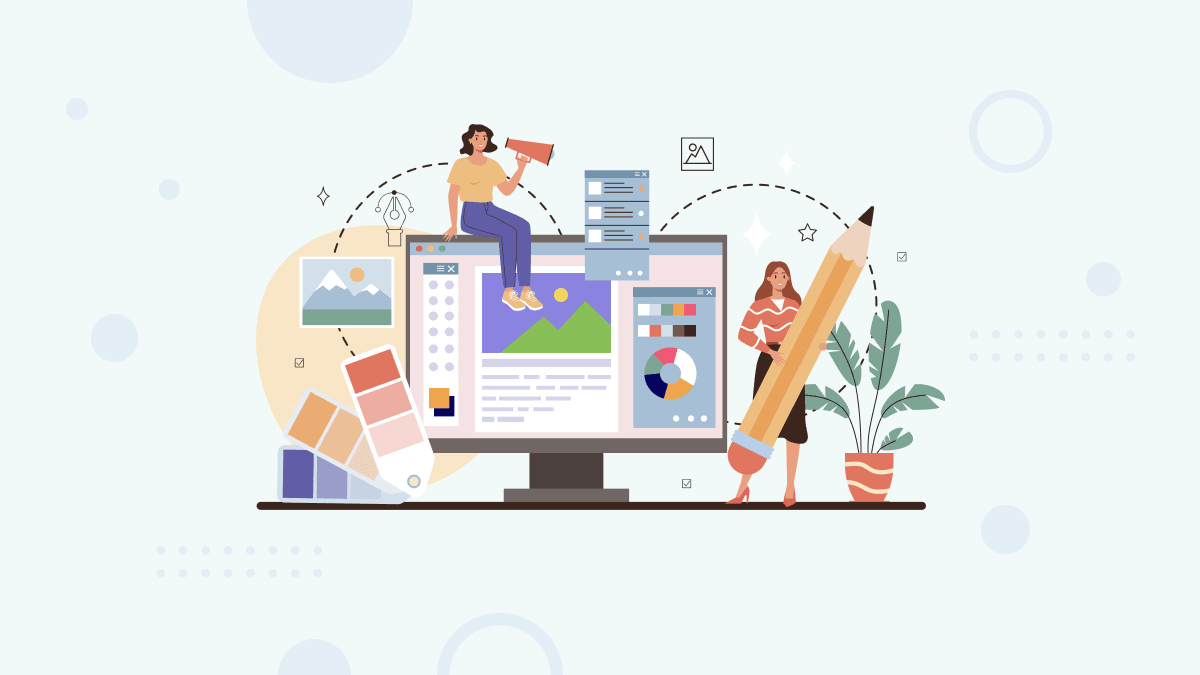

- Communication designers and graphic designers work with different goals in mind. Communication designers focus on communicating a message, while graphic designers focus more on the look and feel of a product.
- Communication designers are strategic, while graphic designers are more tactical. In addition, communication designers work within organizations, while graphic designers may work for themselves or as freelancers.
- Communication designers and graphic designers are different in that the communication designer is focused on the message, while the graphic designer is focused on how it looks. Therefore, a communication designer can be a graphic designer but not vice versa.
- Communication designers often work for organizations and have more contact with clients than graphic designers do. Communication designers usually need to know how to create effective messages. In contrast, a graphic designer may only be required to use typefaces, images, logos, and other design elements.
- Communication designers work for clients, but graphic designers do not necessarily do so. They can also be self-employed and work for themselves.
- The most important thing to understand is that designers work within a specific context. Understanding their work’s context is crucial to make decisions on how they approach design problems.
- For example, a graphic designer will often be concerned with how something looks and feels (how it communicates). In contrast, a communication designer will be more focused on what he/she is saying and how it helps solve problems for your audience.
What are the Basics of Communication Designer & Graphic Designer?
The Basics of Communication Designer & Graphic Designer are similar in many ways. As a graphic designer, you must create logos, ads, and other marketing materials for your clients. On the other hand, communication designers work with companies to help them communicate better with their customers through websites and social media platforms like Facebook or Twitter. Both types of designers need strong skills in design software like Adobe Photoshop and Illustrator and creative thinking ability when coming up with ideas for new projects.
Pros and Cons of Becoming a Communication Designer & Graphic Designer
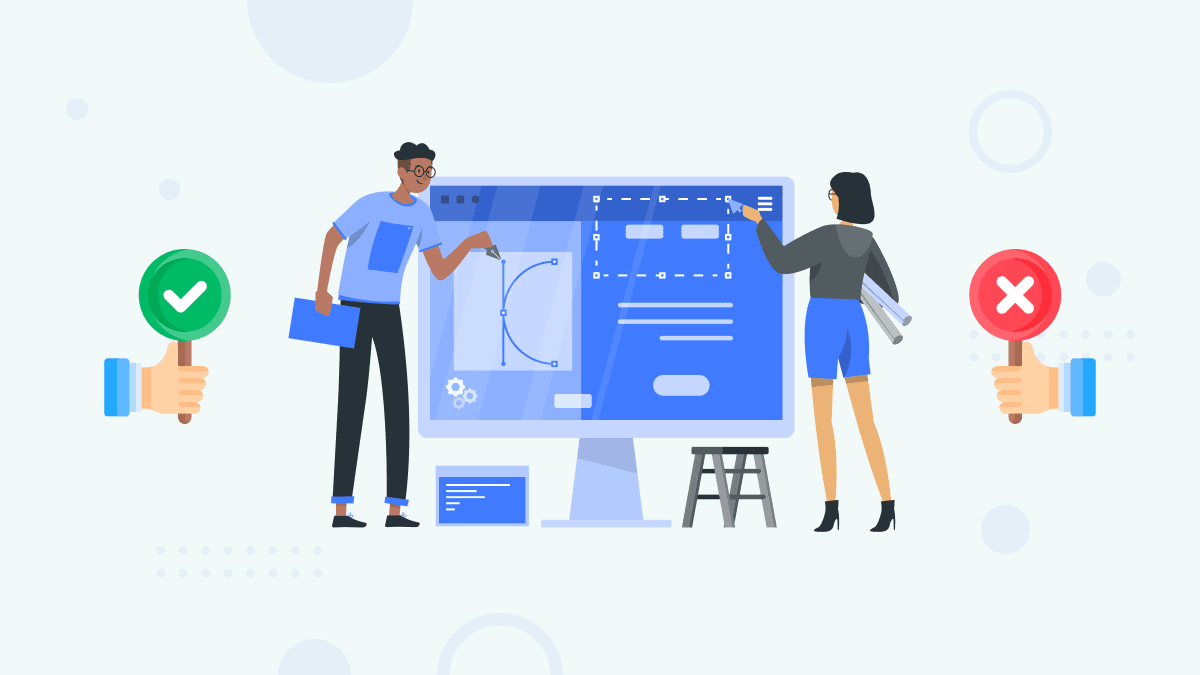

Communication Designer
Pros
As a communication designer, you will be able to work for yourself and make a good income. This can be especially useful if you want to work with clients who pay more than $50 per hour and don’t want to charge them by the hour.
You will also have the opportunity to help people, solve problems, and create beautiful things that millions of individuals use worldwide. In addition, you’ll be able to travel more frequently because there will always be new projects that need your attention wherever you go!
Communication design is often a flexible career path: while some companies may require their employees (including designers) to be at the office from 9-5 every day or even on weekends or holidays when necessary, others offer part-time positions where an employee might only need 30 hours per week but still gets full benefits such as health insurance coverage through their employer’s plan along with paid time off during which they cannot receive any emails about upcoming deadlines (i.e., vacations).
Cons
Here are some of the drawbacks of a career as a communication designer:
- You may have to work with people who don’t share your passion for the field.
- You’ll be expected to meet deadlines, which can be stressful if you’re not used to it.
- The job can be demanding and time-consuming, requiring long hours at times.
Graphic Designer
Pros
- Being a graphic designer is creative. You get to make things that are visually appealing and aesthetically pleasing, which means you have total control over the final product.
- Graphic designers have flexible schedules and interesting job descriptions. Depending on the project’s needs, they can work from home or in an office, and they don’t have to be at their desk from 9-5 every day (or even 5 days a week).
- The variety of projects that graphic designers take on makes their jobs interesting—they don’t always know what will be coming next! There’s no room for boredom when there are so many different avenues for creativity to shine through at work every day.
- As long as you’re willing to learn new skills along the way, new challenges are always waiting around every corner—especially if you want them! Graphic design is a field where self-improvement never stops because there’s always something new under construction somewhere out there in the world today.”
Cons
Graphic design is a highly creative and demanding job. As a graphic designer, you must be able to work under pressure and in a team environment. You should also be able to work in a fast-paced environment.
What are the Roles of Communication Designers & Graphic Designers?
- Graphic design, communication design, and web design are three different specializations in the field of graphic design. Graphic designers use their skills to create logos, posters, and other designs that help people understand messages. Communication designers focus on creating systems that solve client problems by using visuals like illustration or animation. Finally, web designers create websites for brands using HTML and CSS code languages.
- Graphic design focuses more on individual pieces of art, such as logos, posters, and print ads. Designers who lean into graphic design have a fine arts background and receive a BFA or MFA degree. Graphic designers often specialize in using one or two programs like Illustrator or InDesign.
- Graphic design focuses more on individual art pieces, such as logos, posters, and print ads. Designers who lean into graphic design have a fine arts background and receive a BFA or MFA degree. Graphic designers often specialize in using one or two programs like Illustrator or InDesign.
- As you can see from the image above, the graphic design focuses on creating one-of-a-kind works of art (like logos) instead of producing consistent designs that may be used over and over again (like some aspects of web design).
- Communication design focuses more on the process of creating work that solves problems. Communication designers learn tools and skills to create systems that include logo design, illustration, website design, and packaging design. Communication designers are taught to use the full Adobe Creative Suite, which means they can use programs like Photoshop and After Effects in addition to Illustrator and InDesign. This opens up their animation, explainer video, and film editing opportunities.
- Communication design is a process-based field that focuses more on the creation of work that solves problems. While graphic designers create visual layouts, communication designers learn tools and skills to create systems that include logo design, illustration, website design, and packaging design. Communication designers are taught to use the full Adobe Creative Suite (which includes Photoshop, Illustrator, and InDesign), which means they can use programs like Photoshop and After Effects in addition to Illustrator and InDesign. This opens up their animation, video, and film editing opportunities.
Reason to Choose Communication Designers or Graphic Designers as a Career
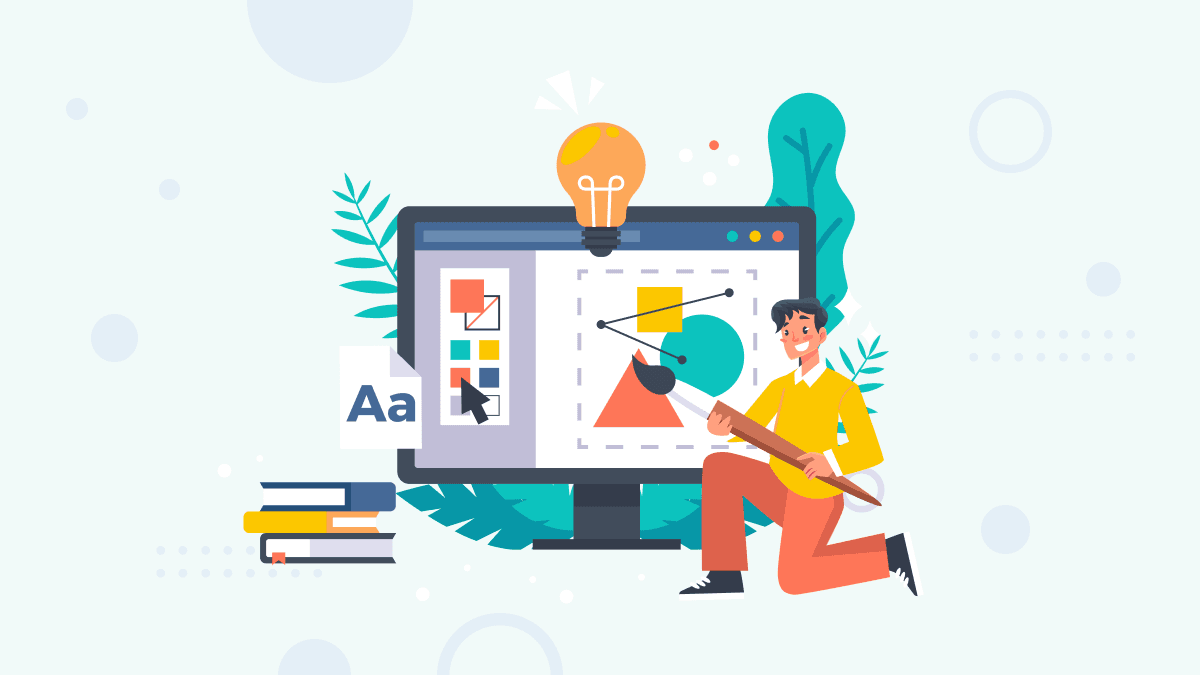

Communication Designers and Graphic Designers are creative professionals that have an amazing talent for bringing ideas to life. They work with clients to create ads, visual concepts, websites, and other marketing materials that help brands stand out from the competition. In addition, communication and graphic designers are skilled at designing graphics, brochures, logos, and more. First, however, we will explore some key differences between the two careers here.
The ability to innovate
Good communication design is not only about making things look beautiful or creating personal posts attractive; it’s also about being able to innovate and create new things that have never been seen before. As a result, designers are able to make a difference by changing the way people do things in order to make their lives better.
Never feeling bored
If you’re someone who doesn’t like to be bored and enjoys learning new things, then communication design and graphic design are excellent choices for a career. The dynamic nature of both fields keeps you engaged and allows for continuous learning opportunities. Additionally, exploring graphic design reviews can provide valuable insights into the latest trends and techniques, enhancing your skills and creativity. Embracing these aspects not only makes your career fulfilling but also ensures you stay at the forefront of innovative design practices.
Communication designers are constantly learning new skills because they are always working on different projects. With each project, a designer may need to learn new software or techniques; so they will have the opportunity to expand their skill set as time goes on. They also work with people in different fields, giving them exposure to other industries outside their own field of expertise.
The same is true for graphic designers—they must constantly keep improving their skills and develop new ones to continue being competitive in the marketplace. As mentioned above, both types of designers should take advantage of any opportunities while working on projects to learn something new daily!
Never feeling satisfaction
- Never being satisfied means you are always looking for ways to improve. The core of graphic design and communication design is about improving your work, not being good at one thing. You don’t want to be the best in one field, but rather the best at all fields that make up a whole designer. This means constantly learning and pushing yourself to do better than what you’ve done before. If you stop improving, it will show in your work: it will become stagnant, bland, and dull after a while because no new challenge or skill is being learned or attempted by the designers themselves.
- Never being satisfied means never settling for mediocrity—and this goes both ways: if a client doesn’t think something is good enough then we’ll find something else until they’re happy with their finished product; likewise, if we’re working on our projects then no matter how much effort we put into them there’s always room for improvement somewhere along the way! It may seem like an overly-critical attitude, but all this does is encourage us designers to keep pushing ourselves harder each day so that when someone looks back at our portfolio years later, they’ll have another reason our knowledge base has expanded exponentially since working together!”
Self-motivation is paramount
In a creative field, it’s easy to get bored and lose motivation when doing the same thing day in and day out. This is where self-motivation can come into play. You must be able to motivate yourself to produce quality work consistently. So how do you do this?
- Set goals for yourself that aren’t related to your work (ex: run a marathon, learn photography)
- Keep an organized workspace so that you can focus on the task at hand
- Take breaks throughout your day
Loving what you do
Do you love what you do? If not, it’s time to find a fulfilling and exciting career. Of course, you can always find a job that will pay the bills, but if it doesn’t excite your creative side, then the day-to-day struggle of work will make it hard for you to keep your passion alive. And let’s face it: if we’re talking about making a difference in people’s lives—that’s what being an artist is all about!
What are the Different Opportunities for Communication Designers as well as Graphic Designers?
Opportunities for Communication Designers
Motion Graphics Designer
Motion graphics designers create animations, videos, and interactive graphics for a variety of applications. For example, you can work in film, television, advertising, or games. If you enjoy the creative process and are comfortable working with technology – both essential skills for the position – then this is an excellent job for you.
Motion graphics designers have to be able to take concepts from marketing teams and turn them into something that plays well with consumers. It’s also important to consider how your animations will be experienced on different platforms (computer screens vs. mobile devices). To get an idea of what motion graphics designers do day-to-day at different companies:
Multimedia Designer
Multimedia designers are the people who create websites, mobile apps, and interactive content. Their primary goal is creating a cohesive brand experience that helps people better understand the company or product. Multimedia designers work with a team of other designers and developers to do this.
Multimedia designers don’t just focus on building websites—they also create logos, illustrations, videos, and other media content for digital platforms like social media or online advertising campaigns. In addition, they work closely with content strategists who create plans for what kinds of messages will be conveyed through these various mediums; they also help develop strategies for how they should be presented (using different colors or fonts).
User Experience Designers
User experience designers are responsible for creating digital products that are easy to use and intuitive. They need to understand the needs of their users and create a design that is appropriate for them. To do this, they need to be able to:
- Create wireframes and prototypes to test a design and quickly get users’ feedback
- Create user flows that outline how someone will interact with the product
- Design an interface that is easy to navigate
- Conduct usability tests
- Conduct surveys
- Conduct interviews
- Improve existing designs with user feedback
Art Director
Art directors are responsible for the visual look and feel of a brand. They work with graphic, web, and multimedia designers to develop the look and feel of all elements that create a brand’s identity.
As an art director, you may be responsible for defining how your client’s product will appear in print or on television. You’ll also need to consider how people will react emotionally when they see it. An art director is responsible for ensuring that all visual aspects of any project—including fonts and layouts—are consistent with the client’s goals.
Web Designer
A web designer is a person who designs websites. They work with the development team to create an aesthetically pleasing and functional interface. In order to do this, a web designer must know about HTML (Hypertext Markup Language), CSS (Cascading Style Sheets), JavaScript, and other web languages.
A web designer may also be responsible for image editing or graphics production as part of their role. As such, they will need to understand file types like .jpgs and .gifs and how images can be resized to appropriate dimensions for different devices like desktops or mobile phones.
Brand Manager
Brand managers are responsible for the overall look and feel of a company. They work with designers to create a unique brand, with developers to create websites or apps, and with marketers to create marketing campaigns.
Opportunities for Graphic Designers
Freelance
As a freelancer, you’ll be working on the projects you want. The only task you have is finding clients for your work. This can be difficult at first, but once you get some experience under your belt and develop a portfolio of previous work, it should become easier.
The main downside of this type of job is that there needs to be a regular paycheck coming in each month. So you need to make sure you’re earning enough money from each project to cover all of your bills and expenses while still giving some wiggle room for emergencies or financial hardships like repairs on your car or computer hardware failure (or buying new equipment).
The best way to find freelance clients is through word-of-mouth recommendations from friends who hire graphic designers themselves—especially if they’re in similar fields as yours. Otherwise, look up local businesses in your area and approach them about potential design work; many small businesses are always looking for good designers who can help them expand their brand presence!
Full-time job
A full-time job is an excellent opportunity for graphic designers. It allows you to work with others, learn new things and build your portfolio. You will also earn a regular salary which is good if you want to save money or build up your savings account. If you are interested in this kind of career path, look for jobs on Monster or Indeed.
Part-time job
There are many different opportunities for those wishing to enter the field of graphic design. These include working from home or an office, full-time or part-time, freelance or on a staff basis, and remotely or locally.
Internship
Internships are a great way to get your foot in the door and gain experience, whether you’re trying to land a full-time job or want to test different career paths. If you’re looking for an internship, it’s important to make sure that you’re getting paid. Some internships are unpaid, which means you risk losing money while gaining valuable skills and knowledge. Make sure that if your internship doesn’t pay anything at all, it’s worth it by helping you get closer to achieving your goals.
Remote work
You can work from home anywhere in the world. Working remotely is a great way to travel and earn money without having your job interfere with your adventures. It’s also an excellent way to get experience if you’re just starting out. The best part? You don’t have to worry about getting up early or getting stuck in traffic daily!
Conclusion
If you’re still unsure, think about how much time each job would require. Communication designers spend more time researching, writing, and editing content than they do designing graphics. Graphic designers spend more time on the creative side of things–designing graphics from scratch or choosing colors that complement each other in order to create a cohesive look for an entire project. If you like to work with your hands and are more interested in design, graphic design may be right for you. Communication design could be the perfect fit if you love words and have a knack for writing.
Hope this article will give you a decent idea about communication designer and graphic designer.
Frequently Asked Questions
Q. What does a visual/communication designer do?
A. Visual/Communication designers focus on the aesthetics of a website, web app, or other digital design. Other visual design definitions include a focus on user experience specifically as it relates to those aesthetics.
Q. What is the definition of communication design?
A. Communication design was born out of a mixture of graphic design and user interface (UI) design. It focuses on the aesthetics of a website or other digital design.
Q. What are the principles of communication design?
A. The principles for effective communication design are: Organize the presentation about a hierarchy of messages. Then, use a constantly evolving attribute of the material to sequence it along a path. Finally, order the concepts, so that earlier concepts facilitate understanding later concepts.
Q. What does a communication designer do?
A. A communication designer would design and produce the entire scope of a messaging campaign from start to finish. Communication designers may work in advertising, web or app design, branding, or product design, among many other fields.
Q. Who do communication designers work with?
A. Communications designers work in a variety of settings, including advertising agencies, public relations firms, corporate communications departments, and design studios. They may also be self-employed. However, most work full-time, and some work more than 40 hours per week to meet deadlines.
